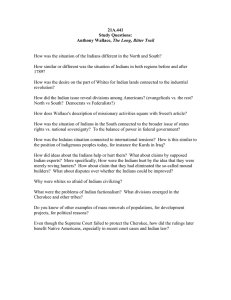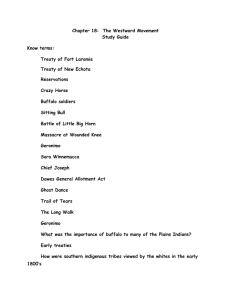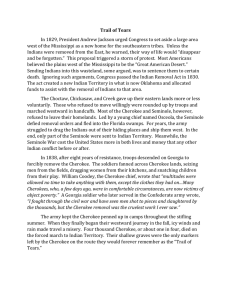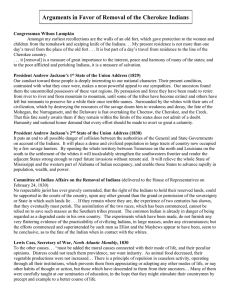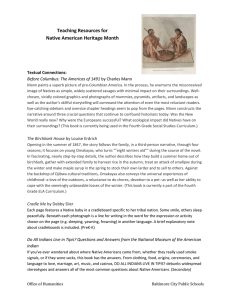Trail of Tears - PBS Summary
advertisement
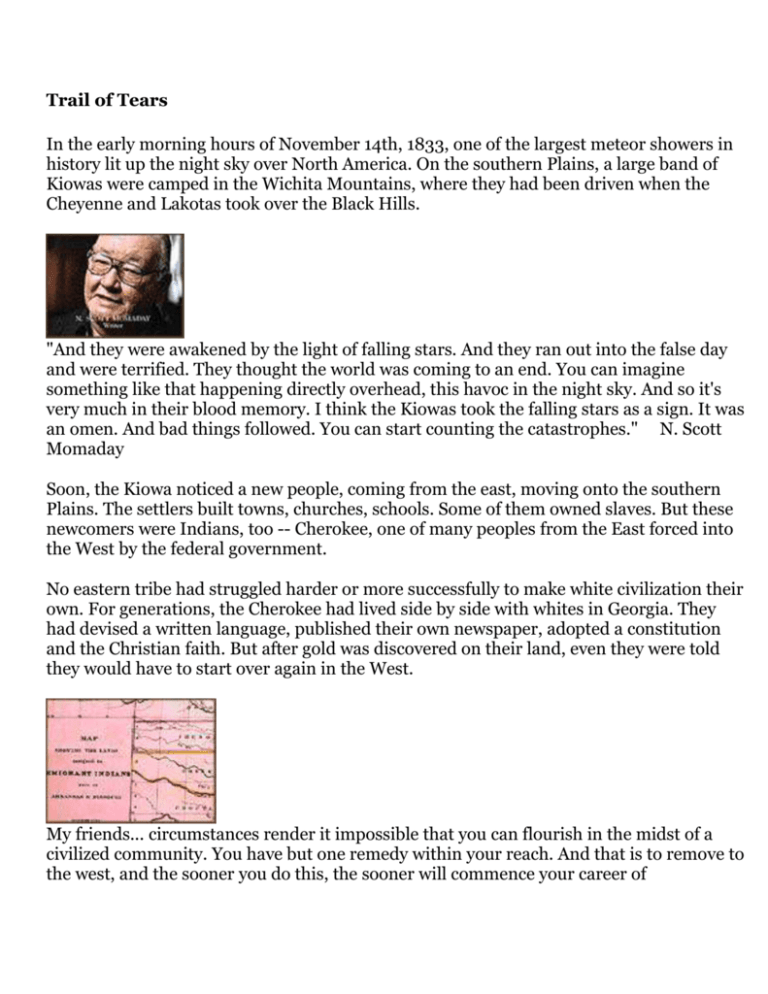
Trail of Tears In the early morning hours of November 14th, 1833, one of the largest meteor showers in history lit up the night sky over North America. On the southern Plains, a large band of Kiowas were camped in the Wichita Mountains, where they had been driven when the Cheyenne and Lakotas took over the Black Hills. "And they were awakened by the light of falling stars. And they ran out into the false day and were terrified. They thought the world was coming to an end. You can imagine something like that happening directly overhead, this havoc in the night sky. And so it's very much in their blood memory. I think the Kiowas took the falling stars as a sign. It was an omen. And bad things followed. You can start counting the catastrophes." N. Scott Momaday Soon, the Kiowa noticed a new people, coming from the east, moving onto the southern Plains. The settlers built towns, churches, schools. Some of them owned slaves. But these newcomers were Indians, too -- Cherokee, one of many peoples from the East forced into the West by the federal government. No eastern tribe had struggled harder or more successfully to make white civilization their own. For generations, the Cherokee had lived side by side with whites in Georgia. They had devised a written language, published their own newspaper, adopted a constitution and the Christian faith. But after gold was discovered on their land, even they were told they would have to start over again in the West. My friends... circumstances render it impossible that you can flourish in the midst of a civilized community. You have but one remedy within your reach. And that is to remove to the west, and the sooner you do this, the sooner will commence your career of improvement and prosperity. Andrew Jackson Early in the 1830s, Congress had created a huge new Indian Territory which was to stretch from Texas to the middle Missouri River. It was meant to be a barrier to white expansion, a place the Indians were promised they would have to themselves, forever. "Another way in which the West was going to solve America's problems was that it looked like the place where you could put Indians. There's all that space. Move them, move them to the West. Take them across the Mississippi River and posterity can figure this one out. Posterity can inherit our dilemma." Patricia Nelson Limerick One by one, Indian peoples were removed to the West -- the Delaware, Ottawa, Shawnee, and Pottawatomi; the Sac and Fox, Miami and Kickapoo; the Choctaw, Chickasaw, Creek and Seminole. In all, some 90,000 Indians were relocated. The Cherokee were among the last to go. Some reluctantly agreed to move. Others were driven from their homes at bayonet point. Almost two thousand of them died along the route they remember as the "Trail of Tears." "The Cherokee are probably the most tragic instance of what could have succeeded in American Indian policy, and didn't. All these things that Americans would proudly see as the hallmarks of civilization, are borne into the west by Indian peoples. They do everything we ask except one thing. What the Cherokees ultimately are, they may be Christian, they may be literate, they may have a government like ours, but ultimately, they're Indian. And in the end, being Indian is what kills them." Richard White www.pbs.org/weta/thewest/program/episodes/two/trailtears.htm
